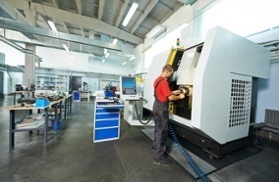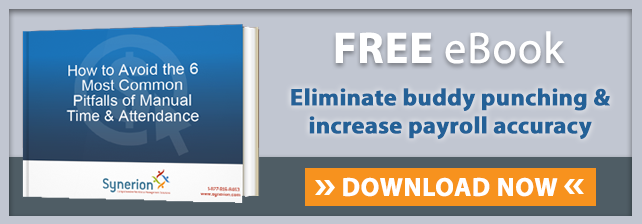 On average, the manufacturing industry loses 13.3 percent of employees to turnover. While this is slightly less than the national average, it still represents billions of dollars lost from training, productivity, and decreases in output.
On average, the manufacturing industry loses 13.3 percent of employees to turnover. While this is slightly less than the national average, it still represents billions of dollars lost from training, productivity, and decreases in output.
If you want to reduce your turnover rates, use these five tips to get into the single digits of turnover.
Know Your Number
If you aren’t tracking turnover, the first step to reducing it is to understand where your business stands. The Bureau of Labor Statistics cites a monthly turnover rate of 2.2 percent for those in the manufacturing industry. Mining your workforce management system to determine what your monthly and annual rate of turnover is an essential step in ultimately reducing your turnover.
Track Relative Turnover
While it’s great to track turnover rates, too many businesses stop there. If rates are high, they send additional manpower to determine why. If rates are low, they assume all is well within that department and ignore it. Tracking relative turnover for small but telling changes in rates can help businesses identify problems before they become catastrophic. Assign a team to track relative turnover within your organization and start identifying trends in those statistics early. Even if a department has a much lower turnover rate than others, if that rate is steadily climbing, you need to stop that trend early. Relative turnover can also be used to identify departments that have historically low turnover and determine what they are doing right.
Hit the Floor
Even if most managers started out on the front-line, by the time they make it into an office, many have lost touch with the daily grind their employees face. Getting managers to not only regularly monitor their employees as they work but also master the daily workflow can contribute to reducing turnover. Trained managers can step in to help employees when they are struggling to train new employees and maintain workflow. This small step improves morale and also shows that managers value their employees. Encourage managers to regularly monitor their employees during their shift as well as ‘train’ with each employee to learn their workflow.
Value Training
If your new hires aren’t lasting at least two years, you may have a serious training problem. The manufacturing industry is fast paced and too often, training is sacrificed for short-term gains in productivity. If turnover is already high, co-workers erroneously believe that investing time in new employees will only be wasted. In turn, new employees feel neglected and leave their position, contributing to continued high turnover. Businesses that excel value training by providing time and resources to properly train new employees. From when new employees start their first day to when they can finally train new employees themselves, managers need to provide support for their success.
Conduct Exit Interviews
There’s value in lost employees. While you may not be able to entice them back, getting no-holds-barred insight into what went wrong can provide valuable information to your organization. Use an outside agency or an anonymous survey to offer a chance for former employees to express why they left. Don’t get bogged down in individual exit interviews, rather view them as a whole quarterly or semi-annually. Look for trends in complaints and see how you can address those concerns. Create a team that can sort through each interview and come up with an action plan to address widespread concerns.
While you may not be able to eliminate turnover, reducing it can save your business money and time, resulting in a happier and more productive workforce. Start with these five tips to ensure you keep your best employees. 